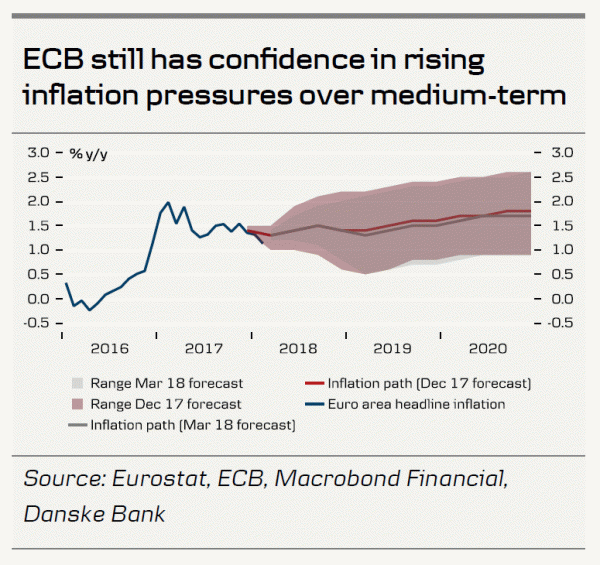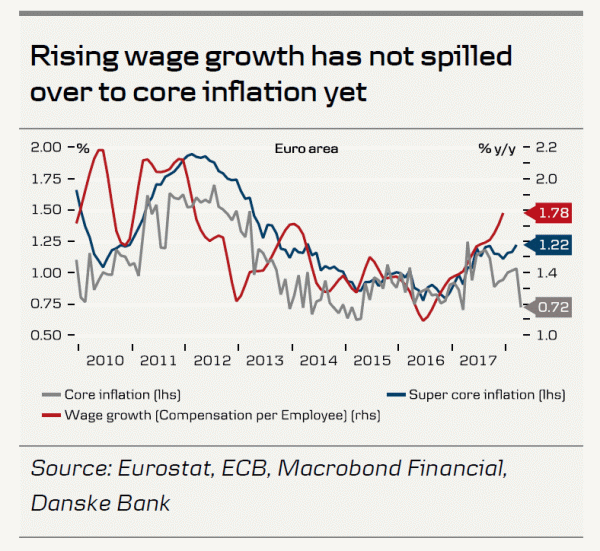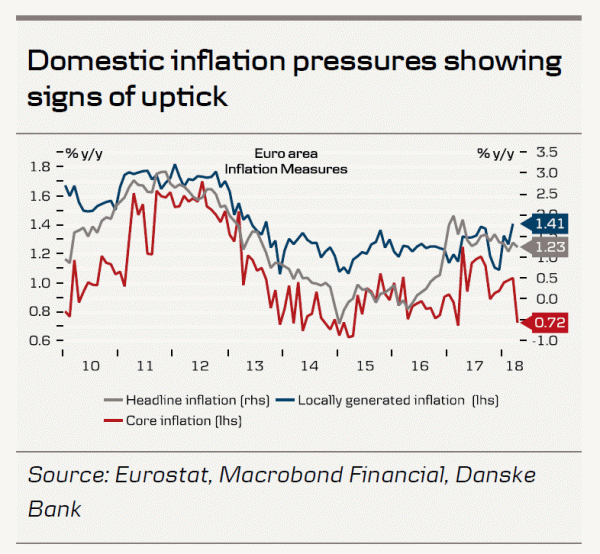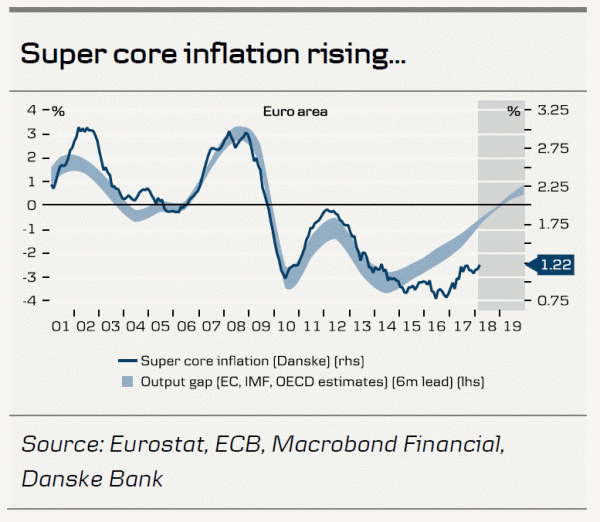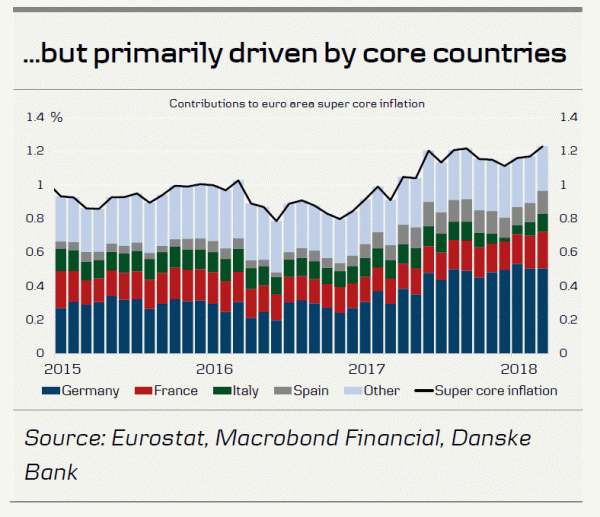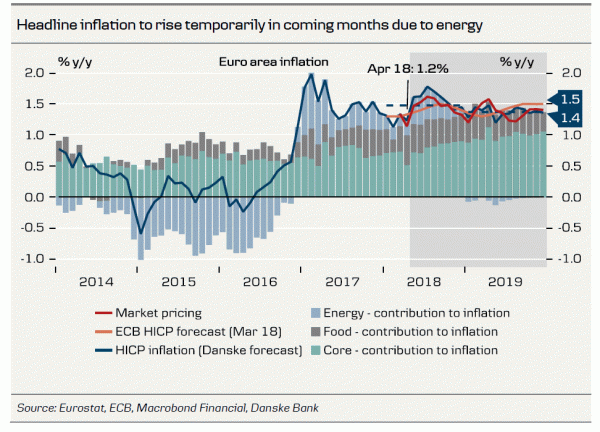Euro area headline inflation fell back to 1.23% y/y in April, driven by a dip in core inflation to 0.72% (compared to 1.03% in March), while energy and food price inflation both accelerated to 2.55% and 2.45%, respectively. A decline in core inflation was widely expected due to the differing timing of Easter. Last year Easter was in April, which resulted in big increases in items such a package tours and services related to transport, pushing service price inflation to 1.84% in April 2017. This year, Easter took place mainly in March, and hence the base effect became a drag this time round.
We think the ECB will see through this temporary inflation dip and focus on the trend in the underlying inflation pressures and whether core inflation rebounds above 1.0% in May. This will also be crucial for whether the next change in the forward guidance will come in June (as markets expect) or July (as we expect). At the last meeting, Draghi highlighted that the ECB has unchanged confidence in the convergence of inflation towards its aim, despite the growth moderation as of late, not least because wages have started to rise from their subdued levels of the last few years. But despite the pick-up in wage growth, core inflation has shown only a marginal upward trend since the beginning of the year.
What do other measures of underlying inflation pressures tell us? Super core inflation (which only includes HICP items linked to the output gap) edged up to 1.22% in March, which is an encouraging sign, but its responsiveness is still lagging developments in the output gap. Also in terms of country composition it is largely driven by core countries such as Germany and France, whereas super core inflation remains very weak in the periphery (Italy: 0.61% in March).
Another interesting measure to follow is our domestically generated inflation measure, which includes only locally sourced HICP items and aims to filter out the (mostly negative) impact of international factors and globalisation. This measure has risen steadily since the beginning of 2018 and at 1.4% now lies above headline inflation. This is encouraging news for the ECB, as it indicates that domestically generated price pressures are indeed accelerating as hoped, although at a slow pace, while global factors continue to exert a drag on eurozone inflation.
What is the outlook from here? A temporary increase in headline inflation in the coming months is likely because of energy price inflation, but we expect the underlying price pressure to stay subdued going forward. Although we look for a rebound in core inflation to 1.0% in May, our view remains that core inflation will rise only very gradually during 2018, averaging 1.1% before accelerating to 1.4% in 2019 on the back of rising wage growth and service price inflation.




